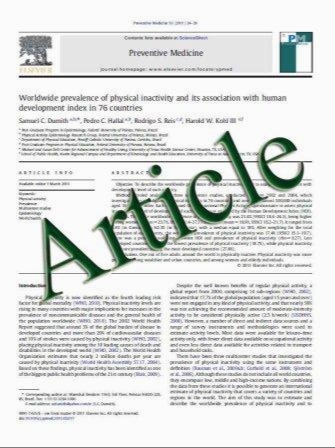Eosinophilic Gastrointestinal Disorders (EGID) with Peripheral Eosinophilia: A Retrospective Review at Mayo Clinic
- نوع فایل : کتاب
- زبان : انگلیسی
- مؤلف : Joohee Lee Ross Dierkhising Tsung-Teh Wu Jeffrey Alexander Catherine Weiler
- چاپ و سال / کشور: 2011
Description
Background and Aims Hypereosinophilic syndrome (HES) is defined by significant eosinophilia ([1,500 eos/ ll), which often leads to end-organ damage/dysfunction. It is unclear if the presence of significant peripheral eosinophilia ([1,500 eos/ll) indicates a more aggressive form of eosinophilic gastrointestinal disorder (EGID). Methods A database query of the Mayo Clinic Rochester electronic records (1995–2008) was performed using several search terms for eosinophilic gastrointestinal disease, and 161 records were reviewed. Patients under 18 years age, those without Mayo-reviewed pathology specimens, those with eosinophilic esophagitis only, and/or those with evidence of secondary etiologies for GI eosinophilia were excluded. A total of 39 were found to have primary EGID. We compared individuals with biopsy-proven primary EGID based on whether they had significant peripheral eosinophilia (C1,500 eos/ll) (group A) or not (group B). Results Group A tended to have more atopy (A: 12/15; B: 11/24; p = 0.03) and more extensive segmental involvement of the GI tract (p = 0.001). None with available studies had evidence of cardiac (A: 7/15; B: 6/24) or bone marrow (A: 10/15; B: 6/24) involvement. The two thromboembolic events in group A after diagnosis did not translate to significantly greater risk (HR = infinity, p = 0.13; group A vs. B). Doses of initial (A: 40 mg/day; B: 55 mg/day; p = 0.17) and maintenance prednisone (A; 8.75 mg/day; B: 7.5 mg/day; p[0.90) were similar. Group A was significantly more likely to need maintenance prednisone (77 vs. 8%, p = 0.001), with a median treatment duration of 52 weeks. Recurrence of symptoms (and peripheral eosinophilia) during prednisone taper was common in both groups. Prednisone-sparing agents (hydroxyurea, imatinib mesylate, interferon (IFN)-a2b, anti-interleukin (IL-5) monoclonal antibody) were more commonly used in group A (73 vs. 8%; p\0.0001). Conclusions EGID with peripheral eosinophilia C1,500/ ll is associated with atopy, greater GI segmental involvement, and uncertain risk of thrombosis. The common use of long-term steroids and variable responsiveness to nonsteroidal agents, particularly in group A, underscores the need for targeted therapies
Dig Dis Sci DOI 10.1007/s10620-011-1754-3 Received: 10 February 2011 / Accepted: 9 May 2011


